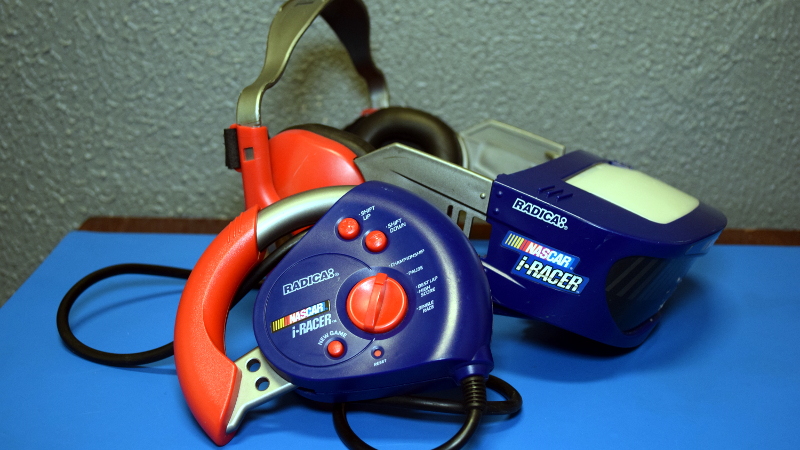
Virtual and augmented reality is not a new century invention. Attempts to "cut a window" in VR were made decades ago. The Oculus Rift and HTC Vive are good things, but the first real-life VR glasses appeared in 1995. It was a Nintendo model, the Virtual Boy. Unfortunately, the device did not become a financially successful project for the Japanese company. Rather, it was a financial disaster.
The situation was somewhat different for other companies that took up virtual reality. A good example is Radica with its RADICA I-Racer video glasses. At first, the company created simple gaming gadgets, but then decided to try their hand at almost real VR.
Why almost? The point is that the display was still stereoscopic. But in addition to the device, a feedback controller and headphones were supplied. Putting on all this, the user plunged into another reality, feeling like a driver on a drawn road. If this device - a normal display and graphics at least the level of Mario - it would not have been worth it.
On your marks!
First, let's evaluate the device itself - what it is and what technologies were used to produce the device 22 years ago.
The first thing you can pay attention to when putting the device on your head is that it is very convenient. It’s even surprising. In addition, the device is lighter than it might seem based on the size of the RADICA I-Racer. More importantly, the ability to customize the helmet. The company has designed it for both children and adults, so the dimensions can be adjusted using various levers and adjustment knobs. As with modern helmets, there is a soft rubber pad for the part that rests on the nose - so that you can play for a long time without experiencing any inconvenience.
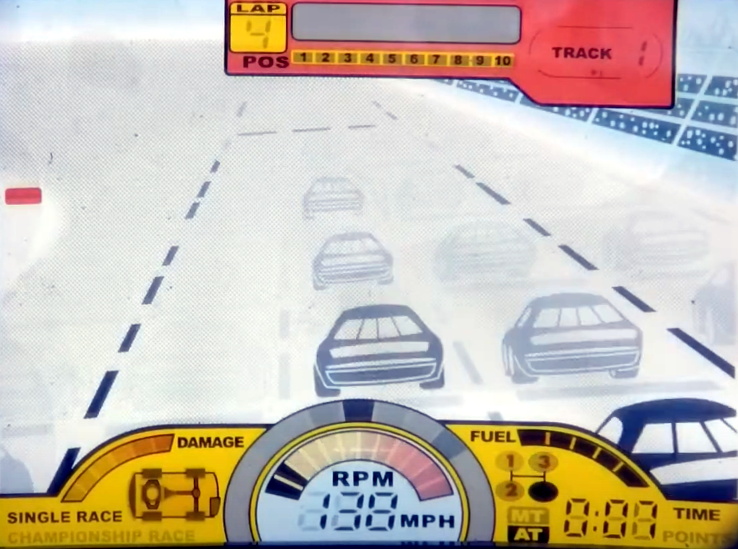
Now about the game. Of course, no one will play this in 2021, except geeks and / or kids out of pure curiosity. To be fair, I note that the stereoscopic effect works as it should. The game is no different from those LCD games that Radica released in the 90s. The only difference is this game is right on your face.
This is not full-fledged 3D, as mentioned above. Cars appear strictly in certain places on the screen, effects like collisions are also static. In general, this game is a slightly more advanced version of the game "Wait a minute", where a wolf was catching eggs in a basket. Only it is stereoscopic, it has additional controls and a helmet.
Well, there are more functions. The player sees the damage caused to his car by collisions, sees the speed and engine speed, there is a switch for choosing a gearbox - automatic or mechanic, there is a status bar for fuel, and the time of arrival is also shown. In general, everything is more complicated here than in "Well, wait a minute." Yes, another important point - on the sides of the "track" there are markings that help to maintain a sense of speed - they flicker, and the higher the speed, the faster. And from time to time, mountains appear on the horizon.
Radica has tried to do everything to ensure that the emulation of reality is complete. When a player crashes into a track obstruction, a red LED turns on and the controller vibrates in the player's hands. Of course, this cannot be called a complete immersion, but for that time such opportunities were very cool.
We disassemble the controller
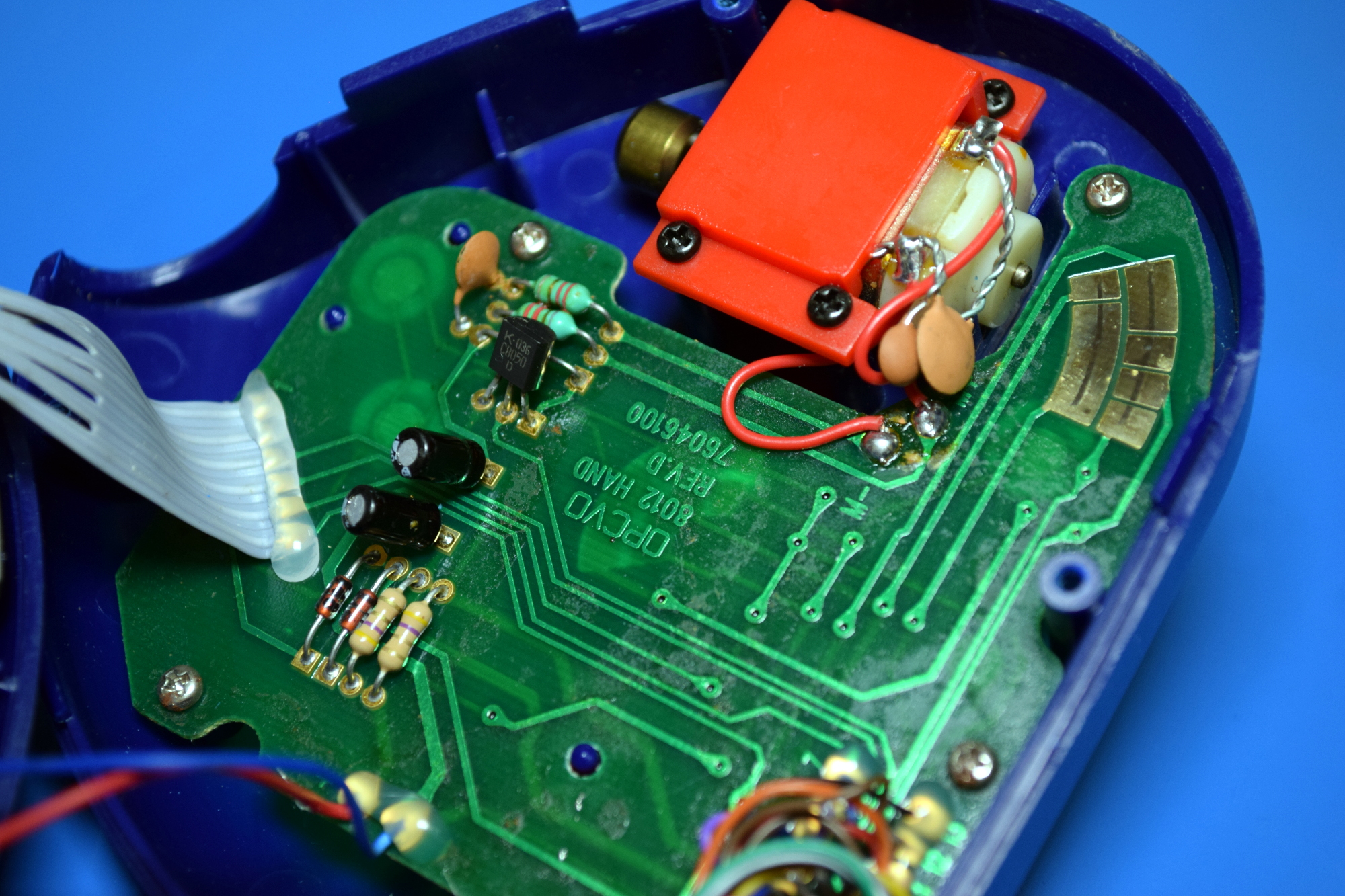
Now let's start disassembling the device. All buttons, switches and so on are located on the surface of the controller, which has been given the appearance of a wheel. Inside are batteries and a relatively small number of cells. There is also an offset motor that generates vibration.
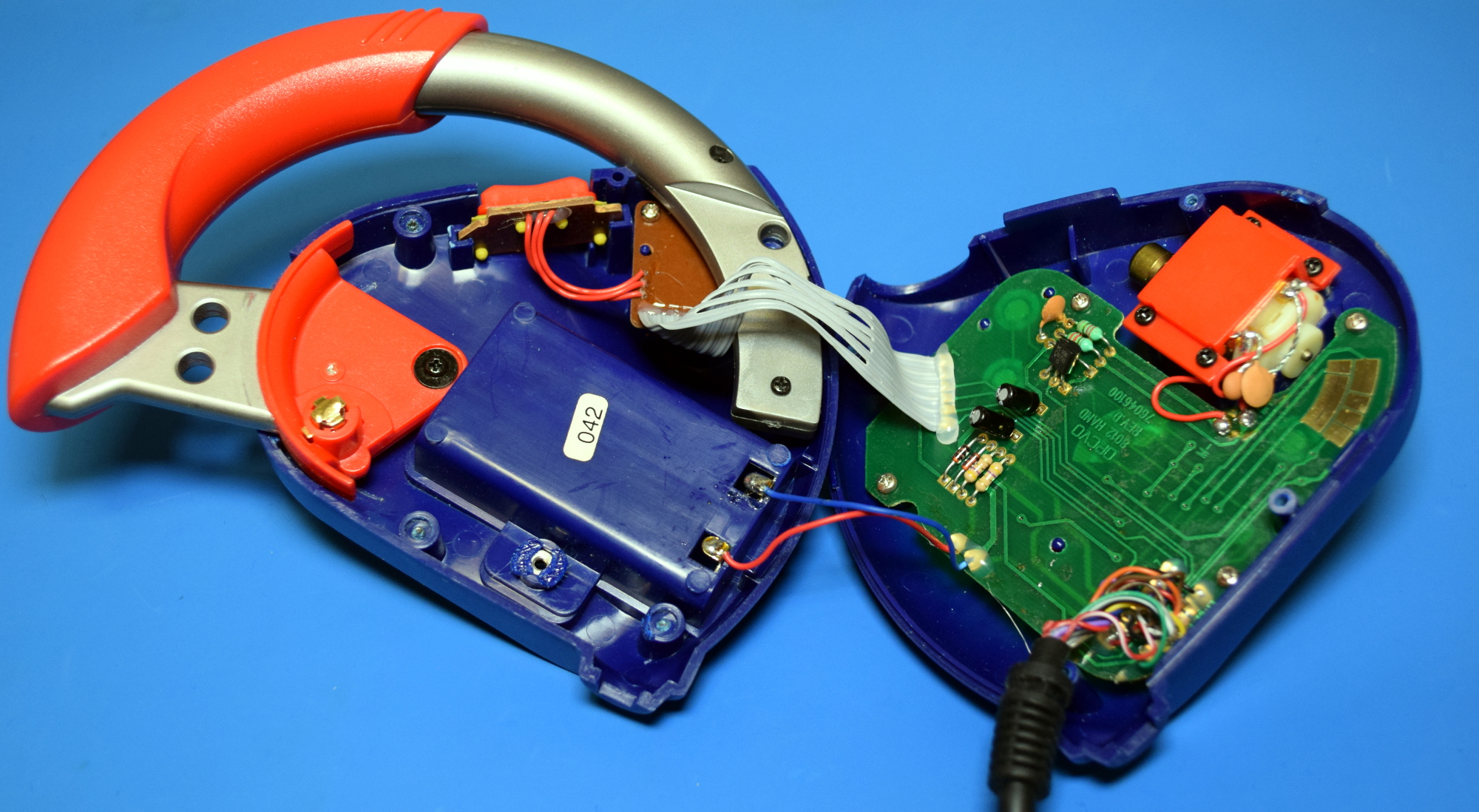
Very interesting is the way the developers implemented the reaction of the game to the controller's movements. One would think that this is a gyroscope - but no, this technology was not yet widespread in the gaming field at the time. Instead, the developers used specially shaped pads on the printed circuit board. When the player turns to the right or left, the contacts are closed in different combinations, generating a signal that is reproduced as a movement by the console.
By the way, the shape of the controller follows the shape of the accessories sold by the same company for the PlayStation 1 and PlayStation 2. The lineup of these accessories was called Gamester. Most likely, in order to reduce the cost of production, the company released several template modules for the controller, which could be used to produce various devices. And that's a good thing - it looks like the development and management in the company has been really effective, in an entirely positive way.
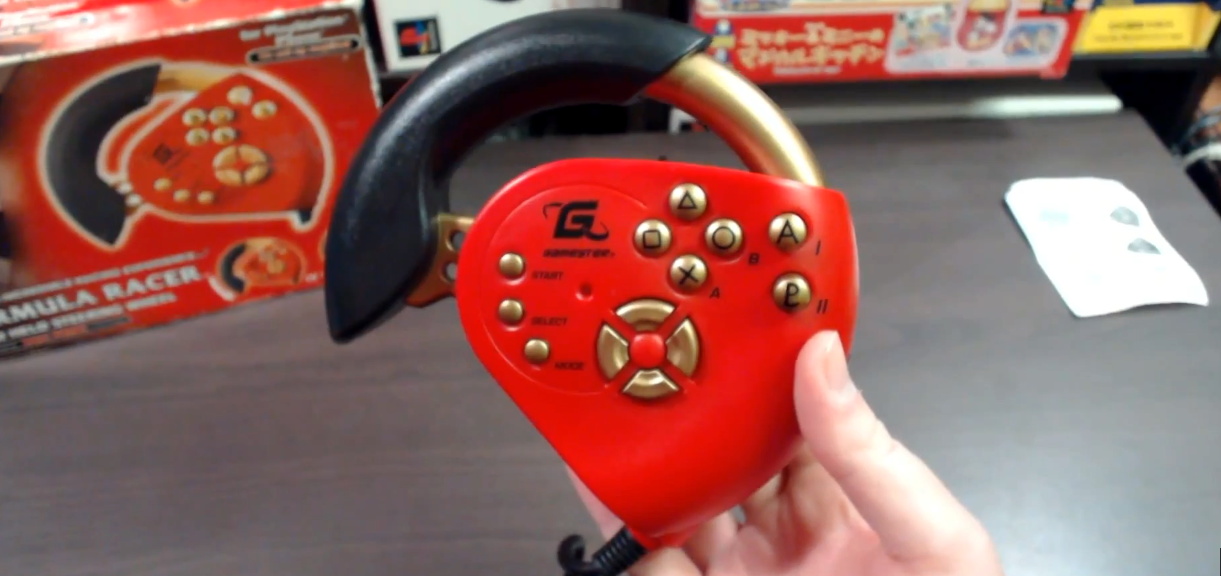
We disassemble the helmet
After all attachments have been removed, the front helmet cover can be removed. Inside - something from the world of cyberpunk. Overall, this is the perfect piece for cosplay or Halloween.
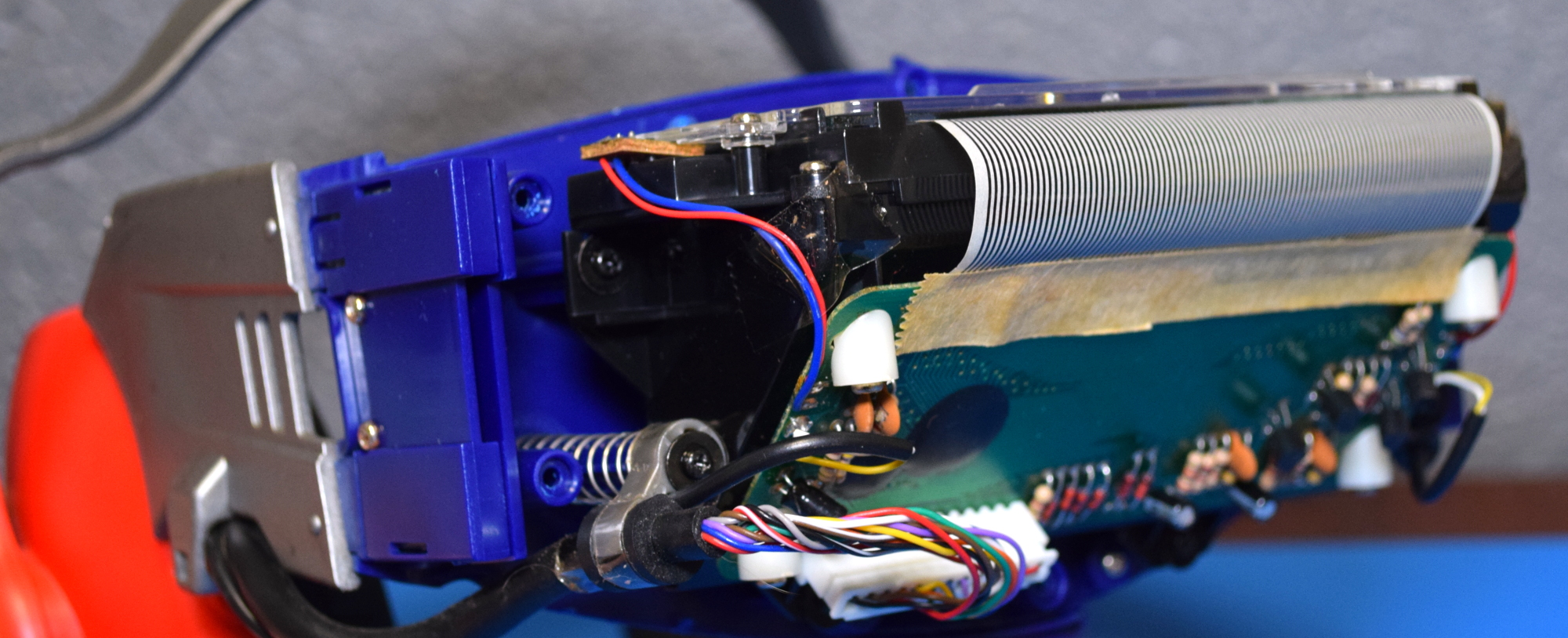
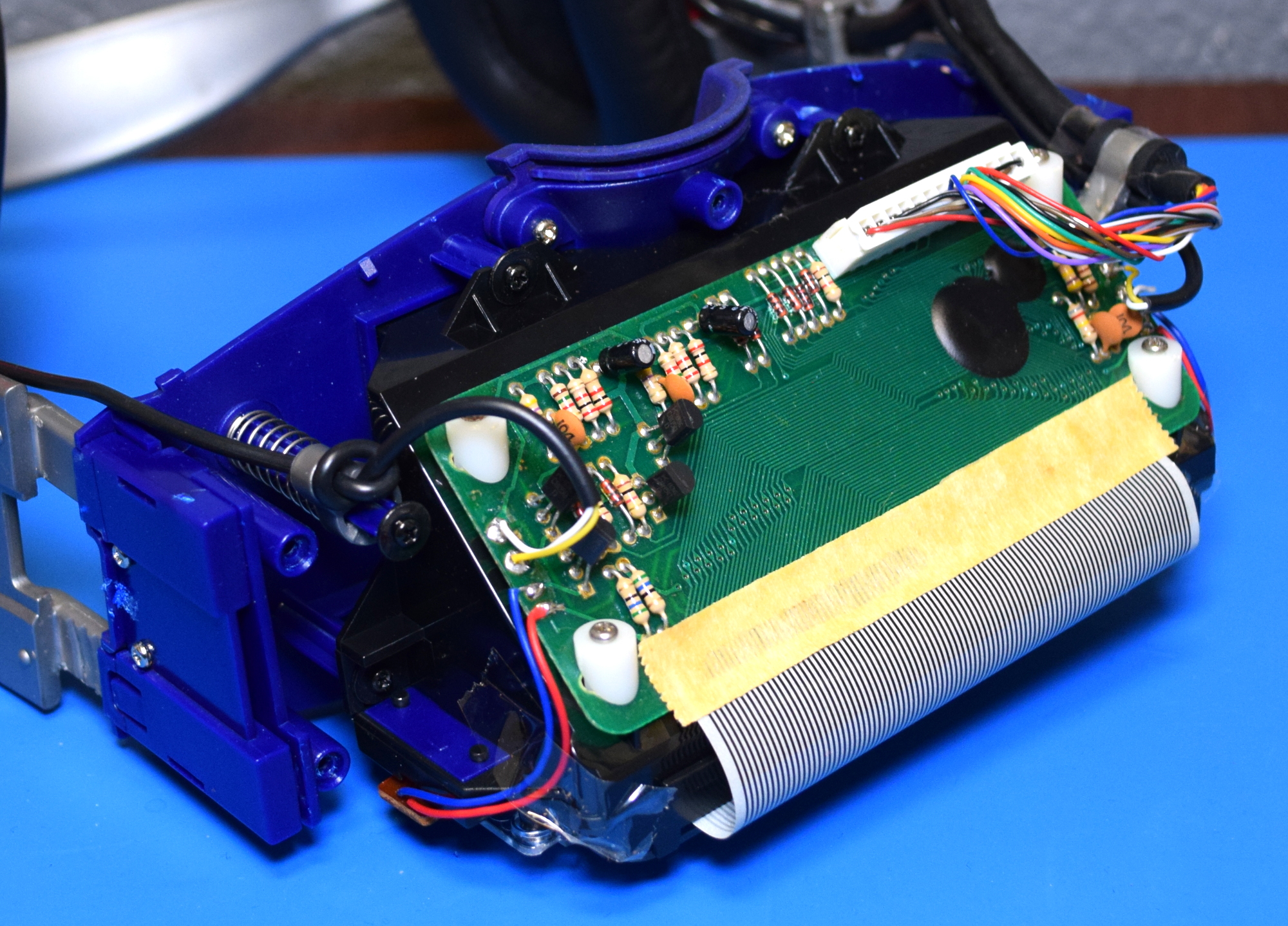
Unfortunately, most of the components could not be recognized - simply because they are covered with black blots of epoxy. It is impossible to remove it without damaging the board or cable. But the mechanical elements of the helmet adjustment are visible - in particular, the springs. It certainly wasn't the most technologically advanced device in the world, but the company has gone to great lengths to make it usable.

We remove three more screws and remove the transparent plastic cover from the optics. Below it is a transparent color film and an LCD display. By the way, the company made another game based on the same equipment.
New life of an old device
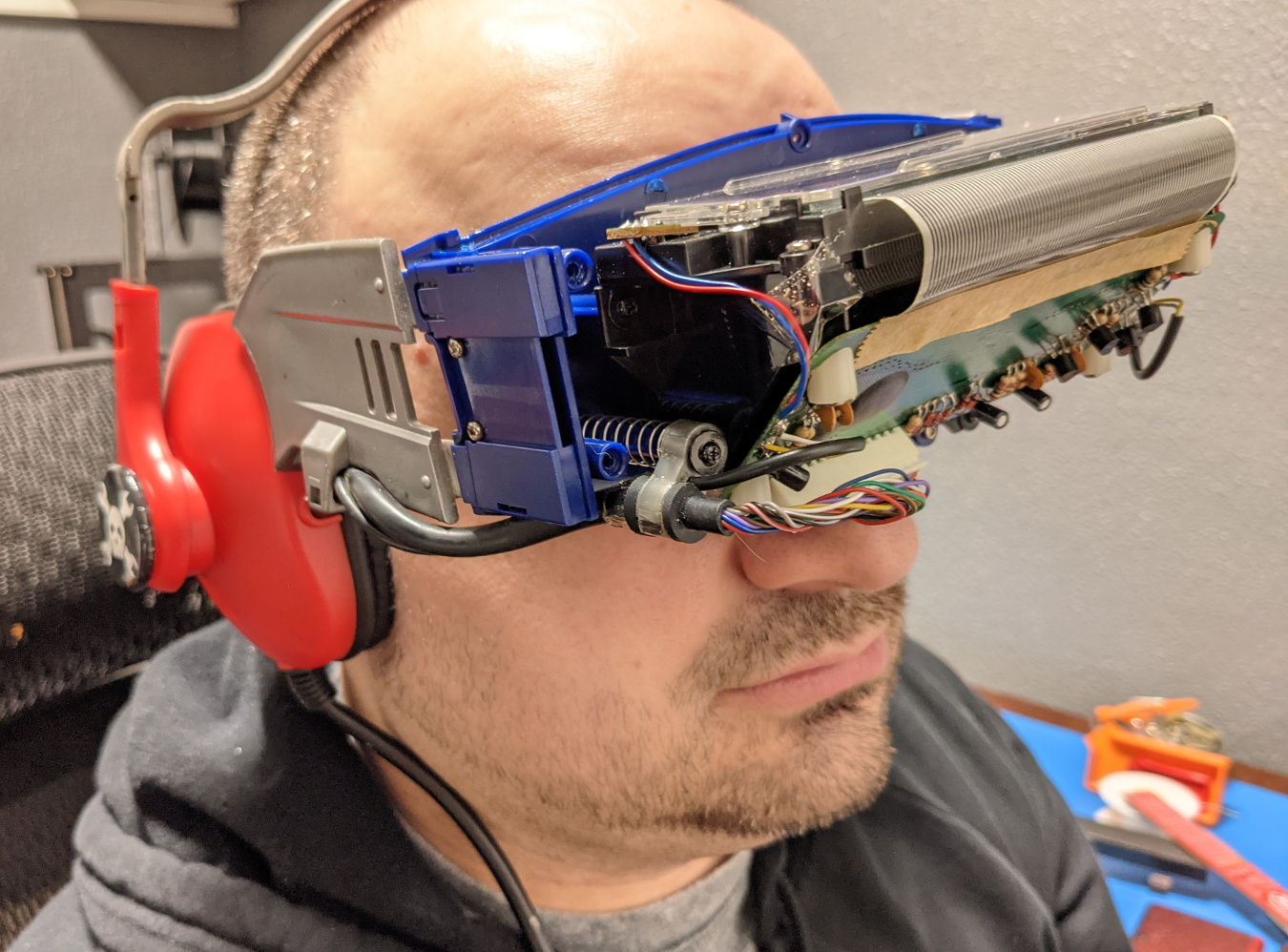
It may seem that the days of the RADICA NASCAR I-Racer are gone. But this is not entirely true - yes, electronics are hopelessly outdated, of course. But the headset itself and its optics can be modified to create an inexpensive video helmet.
To prove this claim, I used my phone by holding it to the top of the headset and playing some VR videos from YouTube. It turned out well, better than Google Cardboard. This is due to the fact that the mirror in the headset is placed at an angle of 45 °.
The phone can be replaced with a completely modern LCD display by installing it instead of the original panel. A pair of 2.2-inch ILI9341 displays should fit perfectly into the holes on the top of the headset. Yes, the resolution of these displays is small, but it is good enough for a start. As a result, the device can be turned into something like an 8-bit Oculus. This is what I am planning to do with my device.
